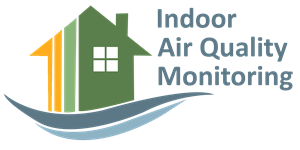Indoor Air Quality Standards
There are 3 main Indoor Air Quality Standards namely:
Since India doesn’t have any set standards by law or else for maintaining indoor air quality, we would talk about international indoor air quality standards only.
This page contains essential facts about International Indoor Air Quality Standards. On this page i.e. Indoor Air Quality Standards page we have attempted to take the best of what the OSHA has to offer for both small and large business and develop a step-by-step approach to help you understand your company’s obligations and what you need to do next. This guide kicks it off with a basic introduction to OSHA.

1) OSHA – Occupational Safety & Health Administration
Introduction:
American congress enacted the Occupational Safety and Health Act of 1970 which created the Occupational Safety and Health Administration (OSHA).
Why was OSHA Created?
OSHA was created with a mission to help employers and employees reduce on the job injuries, illnesses and deaths. OSHA is a very important, infact much needed Indoor Air Quality Standard and it directs USA’s national compliance initiatives in occupational safety and health.
Through the Indoor Air Quality Standards methods described below, OSHA helps businesses protect their workers and reduce the number of workplace deaths, injuries and illnesses. When employees stay safe and healthy, companies can reduce workers’ compensation insurance costs and medical expenses, decreased payout for return-to-work programs, reduce faulty products, and lower costs for job accommodations for injured workers. Indirectly, additional benefits such as increased productivity, lower training costs due to fewer replacement workers and decreased costs for overtime have also been attributed to OSHA’s research and guidance.
Since 1970, workplace deaths have been cut by more than 60 percent and occupational injuries and illnesses have declined 40 percent by following these Indoor Air Quality Standards. In addition OSHA has conducted almost 39,000 inspections & issued over 85,000 citations for safety violations, and has assisted businesses with its Consultation Program by making over 31,000 visits to employers.
What does OSHA do?
OSHA employs the following strategies to help employers and employees reduce injuries, illnesses, and deaths on the job:
- Enforcement – making sure OSHA Regulations are followed
- Assistance – outreach & training to employers and employees
- Cooperation – partnerships and alliances through voluntary programs
OSHA promotes workplace safety and health by:
- Implementing new (or improved) safety and health management systems.
- Completing worksite inspections. Companies failing to OSHA Regulations may be cited and/or fined.
- Promoting cooperative programs including Voluntary Protection Programs, OSHA Strategic Partnerships, and other industry Alliances.
- Establishing specific rights and responsibilities of employees and employers.
- Supporting innovation in dealing with workplace hazards.
- Establishing recordkeeping and reporting requirements for employers.
- Developing training programs for occupational safety and health personnel.
- Partnering with states that operate their own occupational safety and health programs.
- Supporting the OSHA Consultation Program.
2) NIOSH – National Institute of occupational safety and Health
Introduction:
Like OSHA, the National Institute of occupational safety and Health (NIOSH) was established by the Occupational Safety and Health Act of 1970.
NIOSH was established to assist in assuring safe and healthful working conditions by providing research, information, education, and training in occupational safety and health
Investigation of indoor air quality problems is not a herculine task. The Department approach to indoor air quality investigations follow the methods developed by the National Institute for Occupational Safety and Health (NIOSH) in their publication, Guidance for Indoor Air Quality Investigations. This NIOSH Indoor Air Quality Standards technique is described best as one of exclusion. The investigation tries to narrow the range of possible problem causes. The Department has found six major sources of indoor air quality problems:
- Inadequate Ventilation — These problems involve lack of adequate fresh air and uneven distribution of fresh air within a building.
- Humidity and Temperature — These problems involve levels of these parameters outside the normal comfort range.
- Inside Contamination — Copy machines, office products, and chemicals stored indoors have been identified as significant sources of indoor air problems in some investigations.
- Outside Contamination — This is caused by the re-entrainment of previously exhausted contaminants, generally caused by improper air intake placement or by periodic changes in the wind conditions. A common problem is vehicle exhaust fumes from parking garages or loading docks being drawn into a building ventilation system.
- Microbial Contamination — This type of problem is usually associated with water leaks, water infiltration, elevated indoor humidity, humidifiers, and contaminated ventilation ductwork.
- New Building Materials — This results from building materials (including carpeting) releasing gasses into the air during and shortly after the materials are first installed. Increased ventilation after installation will enhance the dissipation of these chemicals. These problems usually resolve with time.
Typical indoor air investigations will include a review of several items:
- visual inspection and plan review of the HVAC system
- observation of conditions in the area of concern
- interviews with individuals experiencing problems
- measurement of ventilation and comfort parameters (carbon dioxide, humidity, temperature, and carbon monoxide)
A general walk-through evaluation of the building should be performed noting specifically:
- water damaged ceiling, wall, and floor finishes
- dust streaking near air vents and diffusers
- mold growth on building components
- apparent building use changes
- the presence of odors
- condition and utility of outside air dampers
- condition of the air filtration system
3) EHS & Air Quality Testing
Environmental Health & Safety of employees is a prime responsibility of any organization & is a key accountability.
If one cares for their customers, Clients and their stake holders then better and safe work place is required. If you Follow these Indoor Air Quality Standards than you may Improve your surroundings day by day.Productivity will also get a boost from healthy & safe environment by using these Indoor Air Quality Standards.


